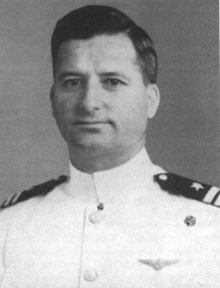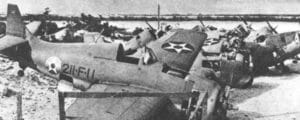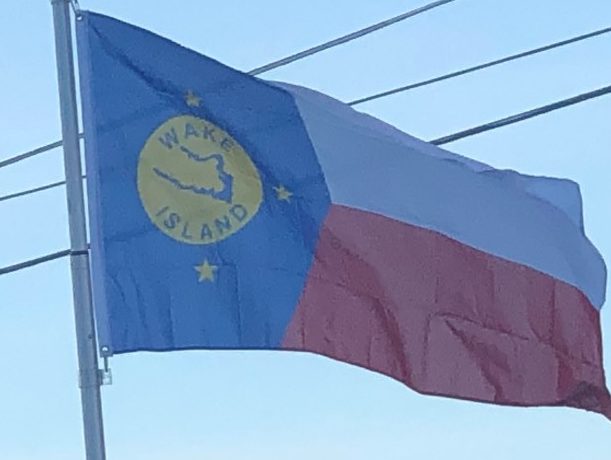
World War II:
Battle of Wake Island:
On December 8, 1941, the day of the attack on Pearl Harbor (December 7 in Hawaii, which is on the other side of the International Date Line), at least 27 Japanese Mitsubishi G3M “Nell” medium bombers flown from bases on Kwajalein in the Marshall Islands attacked Wake Island, destroying eight of the 12 Grumman F4F Wildcat fighter aircraft belonging to United States Marine Corps Fighter Squadron 211 (VMF-211) on the ground. The Marine garrison’s defensive emplacements were left intact by the raid, which primarily targeted the aircraft.

The garrison – supplemented by civilian construction workers employed by Morrison-Knudsen Corp. – repelled several Japanese landing attempts. An American journalist reported that after the initial Japanese amphibious assault was beaten back with heavy losses on December 11, the American commander was asked by his superiors if he needed anything. Popular legend has it that Maj. James Devereux sent back the message, “Send us more Japs!” – a reply that became famous. After the war, when Maj. Devereux learned that he had been credited with sending that message, he pointed out that he had not been the commander on Wake Island and denied sending the message. “As far as I know, it wasn’t sent at all. None of us was that much of a damn fool. We already had more Japs than we could handle.” In reality, Commander Winfield S. Cunningham, USN was in charge of Wake Island, not Devereux. Cunningham ordered that coded messages be sent during operations, and a junior officer had added “send us” and “more Japs” to the beginning and end of a message to confuse Japanese code breakers. This was put together at Pearl Harbor and passed on as part of the message.
The U.S. Navy attempted to provide support from Hawaii but had suffered great losses at Pearl Harbor. The relief fleet they managed to organize was delayed by bad weather. The isolated U.S. garrison was overwhelmed by a reinforced and greatly superior Japanese invasion force on December 23. American casualties numbered 52 military personnel (Navy and Marine) and approximately 70 civilians killed. Japanese losses exceeded 700 dead, with some estimates ranging as high as 1,000. Wake’s defenders sank two Japanese destroyers and one submarine and shot down 24 Japanese aircraft. The relief fleet, en-route, on hearing of the island’s loss, turned back.
In the aftermath of the battle, most of the captured civilians and military personnel were sent to POW camps in Asia, though some of the civilian laborers were enslaved by the Japanese and tasked with improving the island’s defenses.
Japanese Occupation and Surrender:
The island’s Japanese garrison was composed of the IJN 65th Guard Unit (2,000 men), Japan Navy Capt. Shigematsu Sakaibara and the IJA units which became 13th Independent Mixed Regiment (1,939 men) under command of Col. Shigeji Chikamori. The Japanese-occupied island was bombed several times by American aircraft; one of these raids was the first mission for future United States President George H.W. Bush.
